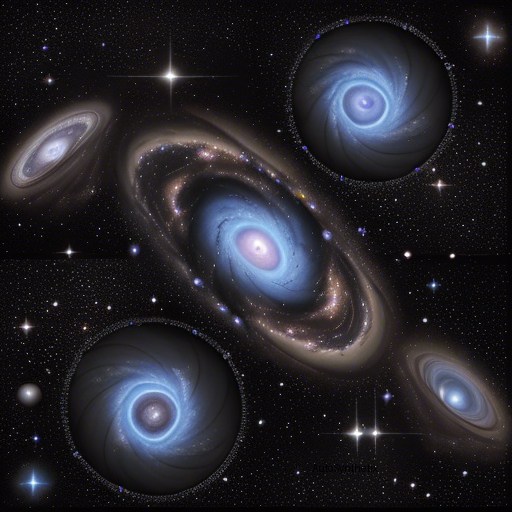Introduction
In a continuous pursuit of unraveling cosmic mysteries, astronomers embark upon groundbreaking studies using sophisticated observatorial tools like the United Kingdom Infrared Telescope's Wide Field Infrared Survey for Hydrogen 2 (UWISH2). A recent publication dives deep into two significant molecular cloud complex regions – Vulpecula OB1 and IRDC G53.2 within our Milky Way galaxy, aiming to identify protostellar jets' presence amidst these celestial nurseries. This research offers critical insights into the birthing process of newborn stars and sheds light on the mechanics behind prodigious galactic phenomena.
Summarizing Stellar Birth Signatures
The study, published via arXiv preprint server, utilizes the exquisite capabilities of UWISH2 to pinpoint a remarkable total of 127 protostellar jets across the surveyed areas. By integrating multiple wavelength data sets ranging from 1.2 to 70 microns, researchers propose 79 Young Stellar Objects (YSOs) potentially responsible for propelling these enigmatic discharges. These YSO categories include approximately 79%, 17%, and 4% classified as Class 0/I, Class II, and Class III stages, respectively. Such categorization aids in understanding the evolutionary phases of newly emerging heavenly bodies.
Characteristics Revealed Through Dynamic Analysis
Exploring further, the team examines the properties encapsulated within these astounding flows, such as length, flux, luminosity, and intermittent 'knotting.' Median lobe lengths stand at 0.22 parsecs (pc) in Vulpecula OB1 and 0.17 pc in IRDC G53.2. With a keen eye towards the regularity of these outbursts, the "ejection" periodicities exhibit a mean value of roughly one every 1.2 kiloyears (kyr), aligning them midway between the acclaimed FU Orionis (FU Ori)-type and EX Lupi (EXor)-type events. Consequently, this finding contributes significantly to expanding knowledge regarding diverse trigger mechanisms governing the emergence of massive stars.
Deeper Insights Into Star Formation Sites & Clusters
As the curtain lifts more widely onto these fascinating realms, intriguing observations come to light. For instance, instances showcasing stimulus-induced star production or burgeoning protocluster development manifest prominently throughout these clouds. Additionally, the wealth of data amassed allows us glimpses into the myriad patterns existing among different outflow attributes and parental drivers. Understanding how these factors interact could open up avenues leading toward improved models predictive of star formation efficiencies.
Conclusion: Paving Pathways Toward Tomorrow's Astronomical Horizons
This pioneering work spearheaded by harnessing advanced instrumentation, such as UWISH2, heralds a promising dawn in deciphering the cryptogram of protostellar jets embedded in vast molecular cloud complexes. As we continue peeling back layers surrounding the genesis of stellar life cycles, breakthroughs gleaned here will undoubtedly serve as cornerstone contributions shaping subsequent generations' exploration endeavors. Prepare yourself for a thrilling ride as astronomy enthusiasts unearth even deeper secrets concealed beneath the veil of the cosmos!
Source arXiv: http://arxiv.org/abs/2403.14615v1
